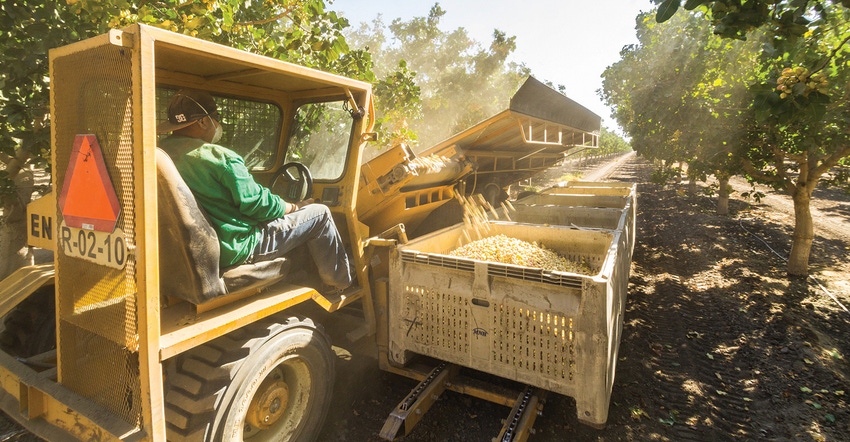
It is the stated mission of the Pistachio Research Board to “provide production research and grower education.” They accomplished both this year in the 2022 virtual celebration of Statewide Pistachio Day.
Acknowledging this to be his 20th such recognition day, the board’s manager, Bob Klein, presented industry numbers that touted another record harvest year for 2020-2021. “Pistachio harvest came in at 1.17 billion pounds, almost all of it from California, making this the second record year in a row. Actually, the last three years have been exceptional.”
Industry growth has shown in the latest numbers that now total over half a million acres — 409,000 of them bearing, 111,000 of them non-bearing, with the most recent yield production tallying 2,822 pounds per acre.
“Crop quality this time looks good,” Klein said. “Open inshell came in at 84.7 percent. If we think of these crops as being an on- and off-year producer, that’s on the high side for an 'on' year compared to a normal of about 75 percent. I think, in the history of the industry, there’s only been once or twice we’ve ever gone over 84 percent.
“Lower closed shell numbers are normally up in an 'on' year, but this time, their numbers were way down, which is actually a concern for processors not having enough shelling stock.”
Average nut size across the board for all varieties was termed small.
Dealing with an industry that has historically alternated from on- and off-year production, Klein said there’s a change in the pattern. “It may be a statistical alternate, but perhaps not a physiological one. Looking back over the last few years, 2019 was about 2,200 pounds per acre and 2020 and 2021 were both about 2,800 pounds per acre. While these weren’t exceptionally high yields, like the almost 3,300 pounds in 2018, we’re seeing the 'off' years be about 65 percent of what the previous 'on' year was, so the alternating years don’t represent a strong on-off cycle.”
Weather a factor
He cites weather conditions as one of the mitigating factors in the change. “The last time we had a chill for the entire crop, across all growers, was 2015. Plus, we’ve had a lot of acres come into bearing since that last synchronizing event, somewhere in the vicinity of 169,000 acres coming into bearing, mostly Golden Hills. So, a very large percentage of our acreage has come into bearing since that last synchronizing event and I don’t anticipate that this winter, although we had excellent weather, a good chill and some rain in December, it won’t be a synchronizing event.”
So, what does the industry veteran look for in the 2022 crop? “We’re going to have 427,000 bearing acres and if you look at it as an 'off' year, like 2019, it should be about 2,200 pounds per acre for a crop total of about 940 million pounds. If you choose to call it an 'on' year, we expect a crop of about 1.2 to 1.4 billion pounds — about a 10 percent increase over last year.”
Expecting processing capabilities to be performing at the maximum this year, Klein urged growers to work closely with processors to make sure crops get in on time and have a home once harvested.
Noting other variables, Klein said insect damage was low (less than 1 percent), “and that’s unprecedented now for four years in a row.” Discussing NOW damage, he said that growers had been incentivized to increase their navel orangeworm control activities as that brought in bonuses for low insect damage.
“Hull integrity was good for most of the harvest but dropped off a bit towards the end compared to the prior year. There’s going to be an ever-increasing pressure to reduce those numbers even more going forward.”
Because 70% of the domestic pistachio crop is exported, microtoxins like aflatoxin and ochratoxin A, could become disruptive problems in trade.
Read more about:
PistachiosAbout the Author(s)
You May Also Like




